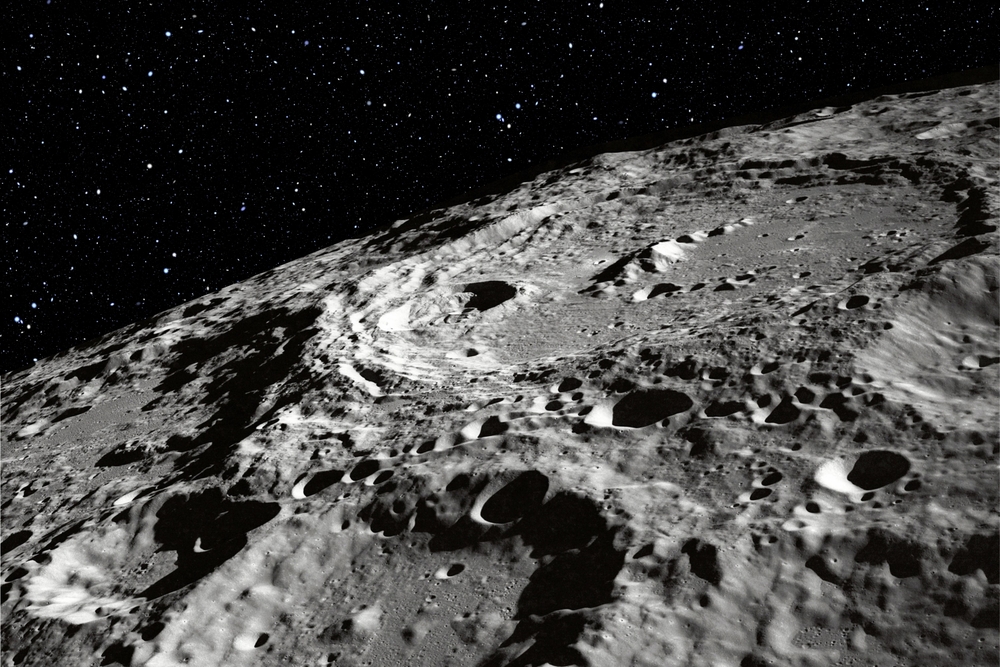Ancient Celestial Objects Likely Carved Two Grand Canyons on the Moon’s Surface
Posted on Categories Discover Magazine

The Grand Canyon on Earth versus the ones on the Moon are a study in contrasts. The terrestrial version was slowly carved over millions of years by wind and water. The lunar equivalents appear to have been ripped open within minutes, by the geological version of two massive fingernails, according to a study in Nature Communications.
Although the Moon’s canyons are well hidden on the dark side of the satellite, they are as impressive as the one in Arizona. They measure about 16 miles wide, over 1.5 miles deep and 167 miles to 530 miles long.
The analysis of this region paves the way for astronauts to take a closer look when the Artemis mission will send astronauts close to the lunar south pole. The canyons will be targeted for geological collection, because rocks at their bottoms will represent ancient material in comparison to the surface.
Tumultuous Time
They were likely formed during a particularly tumultuous time, when both Earth and the Moon were being pelted by celestial objects. A team of scientists at the Lunar and Planetary Institute (LPI) at the Universities Space Research Association in Houston wrote that about 4 billion years ago, either an asteroid or comet zoomed over the Moon’s south pole, skimmed some mountain summits, then scraped the lunar surface, ejecting streams of rock as it carved out the canyons. The whole thing probably took less than 10 minutes.
Describing the impact produced some incredible number. The scientists estimate that the object hit the lunar surface at around 35,000 miles per hour. The initial impact created a nearly 200-mile-wide crater. The debris from that crash then ripped into the surface to form the two canyons. The energy those two debris streams expended to create the two canyons is equivalent to that of the global nuclear weapons arsenal.
Sudden Impact Similar to Chicxulub
The authors estimated that the impact that formed the initial crater was equivalent to the one that formed the Chicxulub crater in the Gulf of Mexico. That event is widely considered to have played a major role in the extinction of dinosaurs.
The site provides a snapshot of a particularly volatile period. “The lunar surface is like a timestamp of the early times of our solar system,” Danielle Kallenborn, who was conducting an undergraduate internship at the LPI, said in a press release. Kallenborn is now doing graduate work at Imperial College London.
Read More: Two Asteroids May Have Wiped Out The Dinosaurs
Lunar Vista
The canyons should offer the Artemis astronauts a great sight-seeing opportunity.
“The splendor of the canyons is so dramatic that if exposed on Earth, they would be national or international parks,” David Kring, a scientist at the LPI, said in a press release. “That extraordinary geology will be matched by extraordinary vistas.”
If and when the Moon opens up for tourism, the twin canyons are likely to be a major attraction.
Article Sources
Our writers at Discovermagazine.com use peer-reviewed studies and high-quality sources for our articles, and our editors review for scientific accuracy and editorial standards. Review the sources used below for this article:
Before joining Discover Magazine, Paul Smaglik spent over 20 years as a science journalist, specializing in U.S. life science policy and global scientific career issues. He began his career in newspapers, but switched to scientific magazines. His work has appeared in publications including Science News, Science, Nature, and Scientific American.